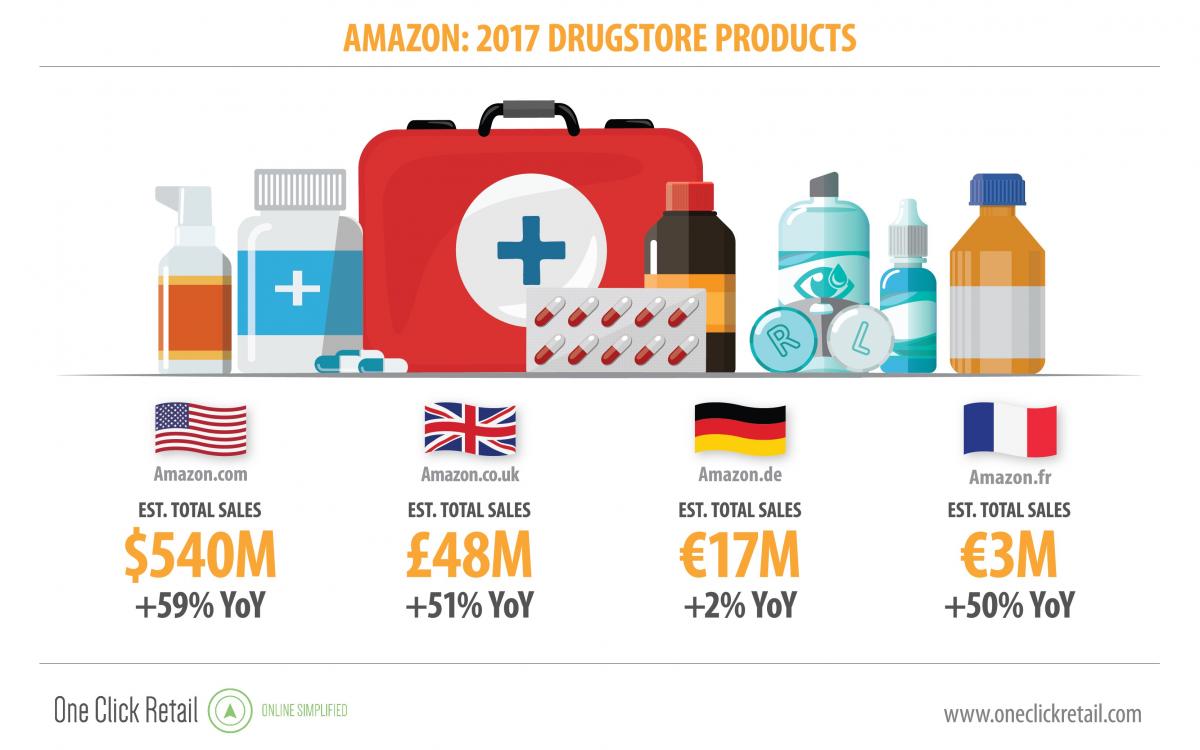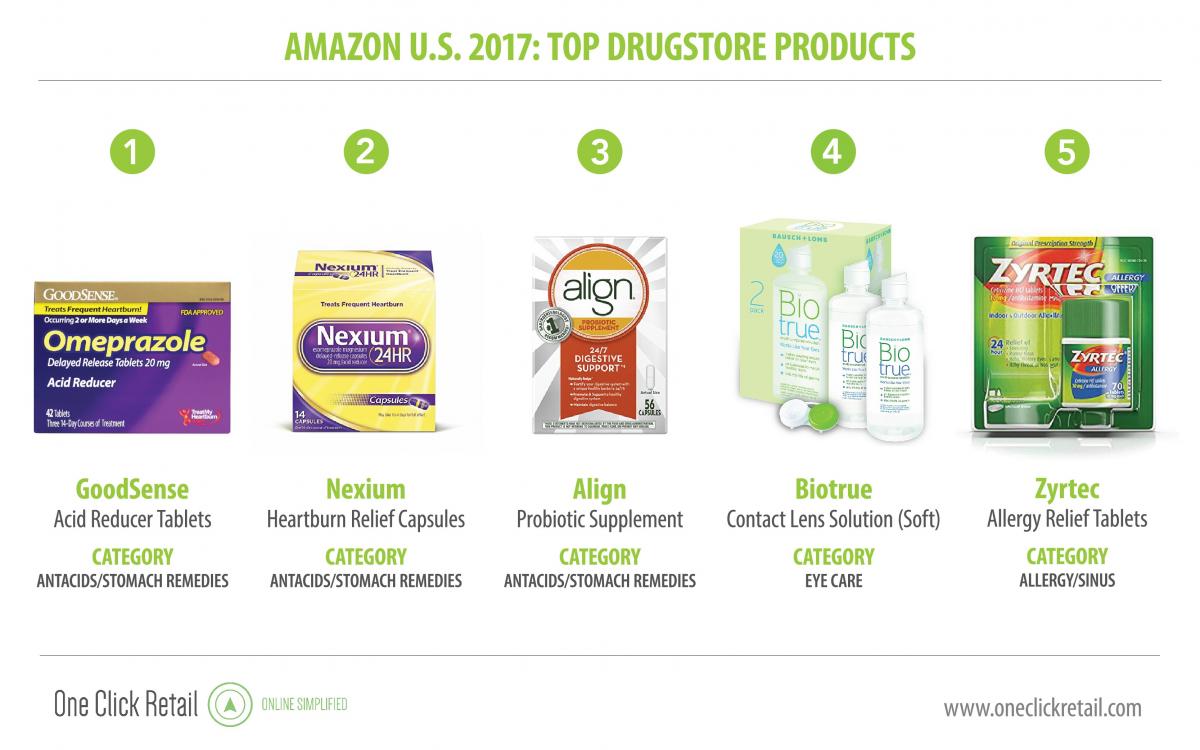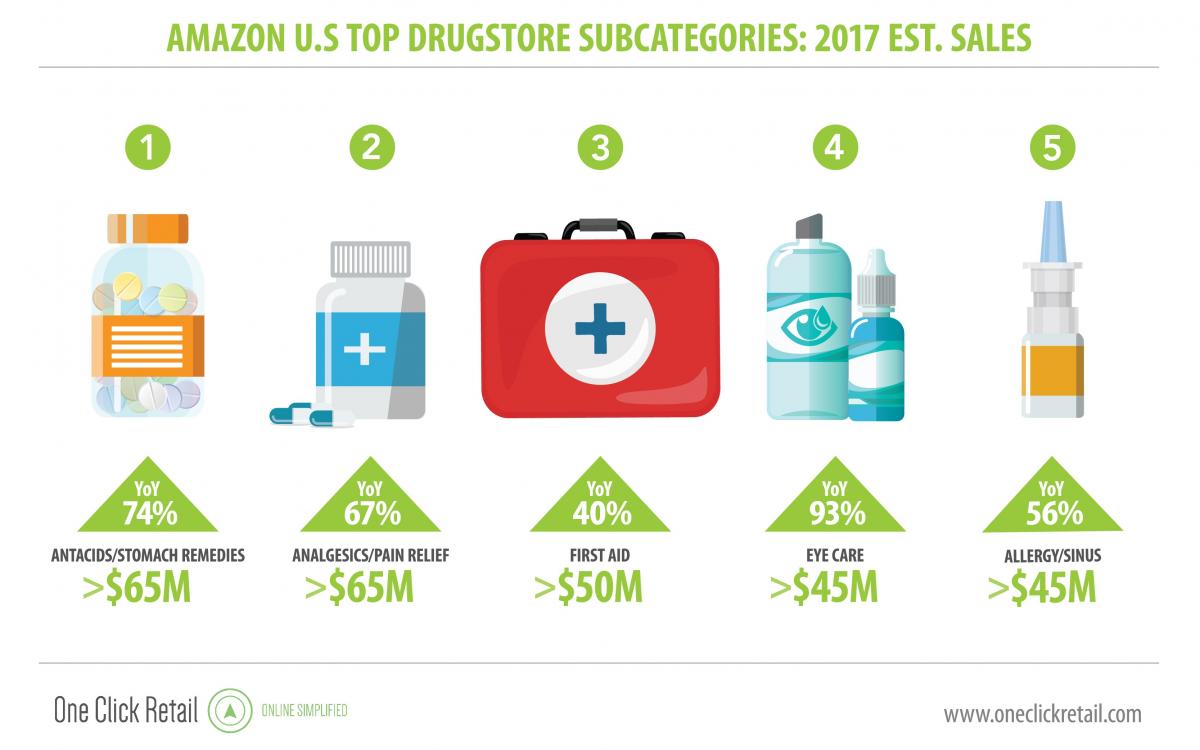By Nathan Rigby, VP Sales and Marketing at One Click Retail
Americans love a well-stocked medicine cabinet. The last thing you want is to wake up with a severe case of the flu and not be able to do anything about it – it's no fun if you call in sick to work but still have to get dressed and drive to the store to buy some medication. The only way to know for sure that if you NEED to stay in bed, you CAN, is to keep enough cough and cold medicine, antacids and analgesics on hand at all times. But there's another way you can avoid going to the drugstore: Amazon.
Amazon is transforming retail in America. Every product group has felt the effects of Amazon on their market share, some more than others, and drugstore products are no exception.

The uniquely American habit of "stocking up" on drugstore products is caused in part by the fact that most drugstores today are large, department-style chain stores located in shopping centers. Small corner drugstores are a dying breed, so most Americans can't just walk around the block to get their much-needed medication. This has encouraged consumers to anticipate and prepare for any future needs and keep those products on hand in the home – that way, they won't have to drive to the drugstore next time they get sick.
It's the fact that the market for "last-minute" medication has shrunk that has allowed Amazon to capture the market. Consumers are stocking up on drugstore products while they shop on Amazon for all their other household consumables. Let's take a look at which drugstore product categories consumers are buying from Amazon and which brands are having the most success.

What's Big
-
Generic Brands
The bestselling drugstore product of 2017 on Amazon.com was a pack of GoodSense Acid Reducer Tablets. Don't worry, if you've never heard of GoodSense you're not alone. This generic brand was the top-performing first-parry seller on Amazon in the drugstore products category with the #1 Antacid (the biggest subcategory) and the #2 item in Allergy/Sinus.
GoodSense has been able to outcompete more established brands by focusing entirely on the Amazon sales channel. If you visit the brand's official website, you will find it links directly to their Amazon store, so that when consumers try to buy GoodSense products from the source, they are brought straight to Amazon. This is a smart move – even though funneling all sales through Amazon lowers the brand's profit margin, it also increases the sales rank of their items, boosting their search rank and significantly increasing visibility and traffic. This translates to more sales, so it's a win-win for both Amazon and for GoodSense, the bestselling 1P drugstore brand on the platform.
-
Homeopathy
The bestselling Cough/Cold remedy of 2017 was sold by Boiron, a major homeopathic remedy brand. Boiron is the 5th largest first party seller of drugstore products on Amazon and another homeopathy brand, Hyland's Homeopathic, is the 8th largest. Despite controversy, homeopathy sells. Though these remedies do not have their own category designation on Amazon, making it challenging to calculate accurate growth rates, several leading items across most drugstore subcategories are marketed as homeopathic, making it a key purchase motivator for Amazon shoppers.

What's Growing
-
Eye Care
The success of GoodSense helped to drive very strong growth in the Antacids/Stomach Remedies subcategory – a rate of 74% year-over-year – but the most impressive growth of 2017 was in the Eye Care subcategory. Nearly doubling in size in 2017 to achieve an estimated value of $45 million, Eye Care is on track to overtake First Aid as the #3 drugstore products subcategory on Amazon.
The growth of Eye Care is driven in part by the growing popularity of Amazon's Subscribe and Save program. The top three items in Eye Care in 2017 were contact lens solutions and the next two bestsellers were both eye drops – two product types that tend toward regular, predictable use. Most consumers who wear contact lenses or have sensitive, itchy eyes have been using these products for their whole adult lives and will know exactly how often they need to restock. Eye Care brands have had success on Amazon by understanding how their customers shop and offering Subscribe and Save discounts on their products. That way, customers can set a regular delivery interval and don't have to worry about placing an order every time, and the brand benefits from the predictable repeat patronage of their customers. Again, it's a win-win.
-
Smoking Cessation
The top five Eye Care items of 2017 were from five different brands. Typically, this indicates that no major, well-known brand is investing heavily enough in Amazon as a sales channel to control their niche, allowing many smaller sellers to enter the market and compete effectively despite low brand awareness. This is a common pattern in Amazon's sales of drugstore products: most major brands have not yet invested sufficiently in this all-important sales channel.
The most notable exception is Smoking Cessation, which was the second-fastest growing subcategory of 2017 (88% YoY growth) thanks in part to the efforts of leading brands NicoDerm (#1 item) and Nicorette (#2 and #3 items).
The success of brands like NicoDerm and GoodSense is easy to explain: they made Amazon a priority while their competitors failed to do so. This strategy could work for any brand, from the household name to the generic. With so many well-established drugstore product brands still so focused on traditional retail, brands have the chance to get in on the ground floor of the industry's biggest growth opportunity. Amazon's sales of drugstore products are growing at 59% year-over-year, so brands need to capture the loyalty of Amazon shoppers now to grow their sales rank, get their flywheel spinning, and collect their profits.
One Click Retail is the industry’s most accurate source of sales data for the world’s top eCommerce marketplaces. Using a combination of website indexing, machine learning and proprietary software, OCR estimates weekly online sales figures with market leading accuracy in order to deliver the best insights, analytics and strategies to their brand manufacturer clients. To catch a glimpse of how OCR gives brands critical edge on online platforms with our unique data and expertise, subscribe to our weekly eCommerce insights blog, and follow us on Twitter and LinkedIn.
If you are a brand manufacturer who would like to learn more about how you stack up to the competition—or would like to see your market share and category growth insights—email us at info@oneclickretail.com for a free capabilities demo.



